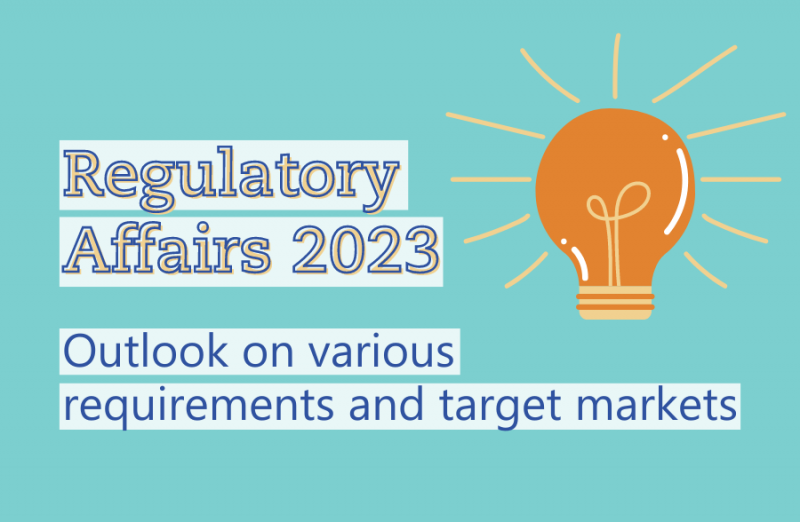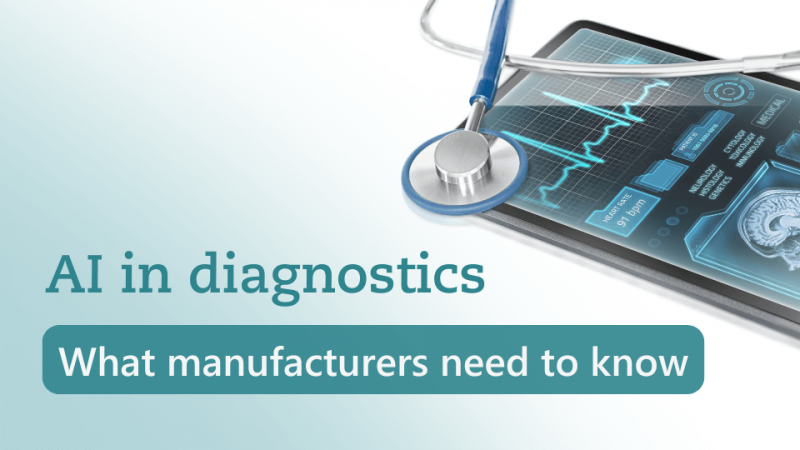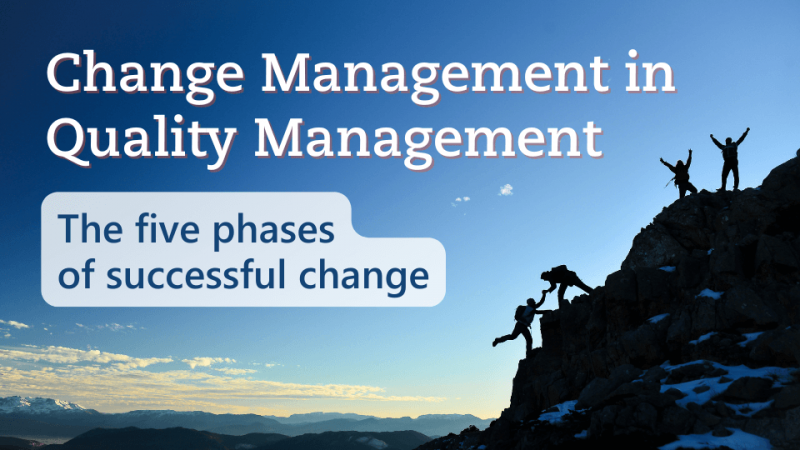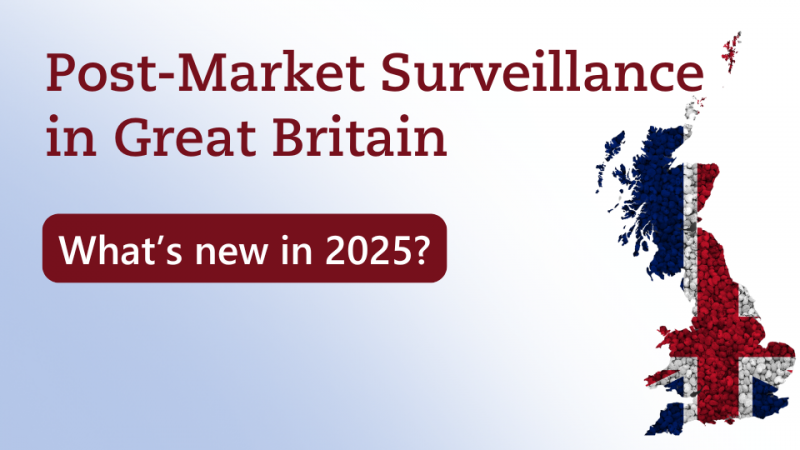Regulatory Affairs 2023: Outlook on various requirements and target markets
20/01/2023
Do you have any questions about the article or would you like to find out more about our services? We look forward to hearing from you!Make a non-binding enquiry now
The past year was exciting: It has kept medical device manufacturers on their toes with the implementation of MDR requirements while IVD manufacturers have also had to overcome some hurdles with the introduction of Regulation (EU) 2017/746 (IVDR) and, for example, update the technical documentation of their in vitro diagnostic devices. Due to the completed Brexit (affects UK) and the end of the Mutual Recognition Agreement (MRA) with Switzerland, both European neighboring countries have effectively become third countries. This complicates the regulatory requirements for medical devices and IVDs to be placed on the UK market and in Switzerland.How will things look in 2023? This year, in our blog posts, we will take you again on a journey through the most important topics in the medical devices and IVD industry. In this post, we give you an outlook on regulatory affairs topics that are already burning issues this year.
We would be happy to actively support you in the upcoming regulatory challenges for your IVDs or medical devices!Best Regards
The MDR and the new transition periods
Where are we coming from, and where are we heading? At the EPSCO (Employment, Social Policy, Health and Consumer Affairs Council) meeting on June 14, 2022, health ministers expressed their concerns: the existing serious challenges related to the implementation of Regulation (EU) 2017/745 on medical devices (MDR) threaten the continuous availability of certain medical devices needed by health systems and patients, while the access of innovative medical devices to the EU market is at risk.This was followed by another meeting of the EPSCO Health Council on September 12, 2022, in which the EU Commission was also involved. The EU Commission took the concerns of the member states and the Notified Bodies seriously and presented those regulatory aspects that are likely to be included in an amendment to the MDR/IVDR.Following the EPSCO Health Council meeting, the new MDCG position paper "MDCG 2022-18" was published in December 2022: on the application of Article 97 MDR to legacy devices whose MDD or AIMDD certificate expires before an MDR certificate is issued. This MDCG document specifically addresses the bottlenecks faced by Notified Bodies that result in delays in issuing MDR certificates and thus non-compliant devices (as the MDD/AIMDD certificate has expired).The aim of MDCG 2022-18 is to ensure the continuous availability of medical devices on the EU market that are necessary for healthcare systems and patients. The MDCG position paper includes information on how the certification bodies intend to apply Article 97 MDR in a legally sound, coherent, and consistent manner.MDCG 2022-18 applies only to legacy devices that fall within the scope of Article 120 (3) MDR and for which the MDD/AIMDD certificate expires or has expired prior to the issuance of the required MDR certificate(s).UPDATE:On January 6, 2023, the European Commission published a proposal to amend the Medical Device Regulation (MDR) and the In Vitro Diagnostics Regulation (IVDR) in order to reduce the risk of the bottlenecks described.After the EU Council approved the draft at the end of January, the European Parliament also approved the Commission's draft on February 16, 2023, with a clear majority. This gives manufacturers more time to adapt their existing products to the regulatory requirements of the MDR. The extension of the validity of the MDD certificates until 2027 or 2028 and the decided extension of the deadline for adaptation to the MDR significantly relieves the timetables of manufacturers and notified bodies.Overview of the most important changes:- Staggered extension of the transition periods according to Article 120(3) MDR depending on the risk class of the products.
- Deadline extension for conversion to MDR:
- 2027 for class III and class IIb higher risk devices.
- 2028 for class IIa devices and that class I devices that need the involvement of a Notified Body.
- Extension of the transition periods with a prolongation of the certificates’ validity according to 93/42/EEC and 90/385/EEC.
- The regulation for the continued provision of devices until May 2025 is dropped (concerns Article 120(4) MDR and Article 110(4) IVDR).
Brexit - Extension of the transitional period for CE marking and outlook for the regulatory framework
After the United Kingdom completed Brexit on January 1, 2021, and the UK has since been considered an EU third country, it is worth taking another look at the Brexit roadmap this year.While the registration deadlines for medical devices with the British regulatory authority MHRA (Medicines and Healthcare products Regulatory Agency) already expired on December 31, 2021, the end of the transition period for placing medical devices and IVDs on the market with recognition of the CE mark in the UK was approaching on June 30, 2023. According to the previously valid Brexit roadmap, only the UKCA marking on medical devices and IVDs was to be recognized in the UK from July 01, 2023.Already at the end of October 2022, the MHRA announced that it would extend the transition period for medical devices and IVDs. According to this announcement, the deadline is to be extended by one year, until July 01, 2024, and the CE mark will continue to gain recognition in the UK market. Other transitional provisions are also to come into force.Furthermore, the UK government planned to implement an independent regulation for medical devices and IVDs after the completed Brexit. The entry into force of this UK MDR was originally planned for July 01, 2023. Last year, the UK government and the MHRA conducted a multi-stakeholder consultation on options for proposed changes to the UK regulatory framework for medical devices and IVDs: In June 2022, they published the responses to the consultation and the broad regulatory framework that could be interpreted from them. According to the new timetable, the new regulatory requirements derived from this would also come into force one year later, from July 01, 2024. A concrete draft of the new regulatory requirements for medical devices and IVDs in the UK is not yet available from the MHRA.UPDATE: The eagerly awaited latest information on this was presented by the MHRA in a webinar on January 24, 2023. According to this, the publication of the future MDR is planned for probably winter 2023. The implementation of the resulting new regulatory requirements is expected to be completed in summer 2024 with a six-month implementation period.Swexit - The developments after the end of the MRA
Until now, patients in Switzerland may only be treated with medical devices that have an EU approval. After the end of the MRA between Switzerland and the EU, a possible bottleneck in the supply of the Swiss population with necessary medical devices became gradually apparent.Therefore, the Swiss Parliament requested the Federal Council to adapt national law so that Switzerland recognizes medical devices with FDA approval. This request was granted on November 28, 2022, and the Federal Council made the decision in favor of supplying the Swiss population with quality-approved medical devices.Thus, in the future, the Swiss medical device market will be expanded to include medical devices with FDA approval and Switzerland will no longer be exclusively dependent on its own products and medical devices with MDR approval. What will the legal framework look like, and what transition periods will apply for the recognition of medical devices from the US? This year, this will concern manufacturers in Switzerland as well as in the EU, who will continue trying to maintain their market share in Switzerland despite competition from the US.The Swissdamed - Swiss Database on Medical Devices - will also be another milestone for the marketing of medical devices in Switzerland. Swissmedic has started the realization of a database comparable to Eudamed in April 2022. However, in the future, registrations for medical devices and IVDs will only become mandatory with a corresponding amendment to MedDO/IvDO (Medical Devices Ordinance/Ordinance on In Vitro Diagnostic Medical Devices). The amendment of the regulatory requirements in MedDO and IvDO, as well as the associated launch of the Swissdamed database, is also planned for 2023.Conclusion
What is really coming and what might still be changed? We keep an eye on the developments around the MDR and IVDR as well as the regulatory requirements in Switzerland and the UK for you.We will report promptly as soon as we hear anything new.We would be happy to actively support you in the upcoming regulatory challenges for your IVDs or medical devices!Best Regards
Our blog posts are researched and created with the utmost care, but are only snapshots of the regulations, which are constantly changing. We do not guarantee that older content is still current or meaningful. If you are not sure whether the article you have read on this page still corresponds to the current state of regulation, please contact us: we will quickly place your topic in the current context.



